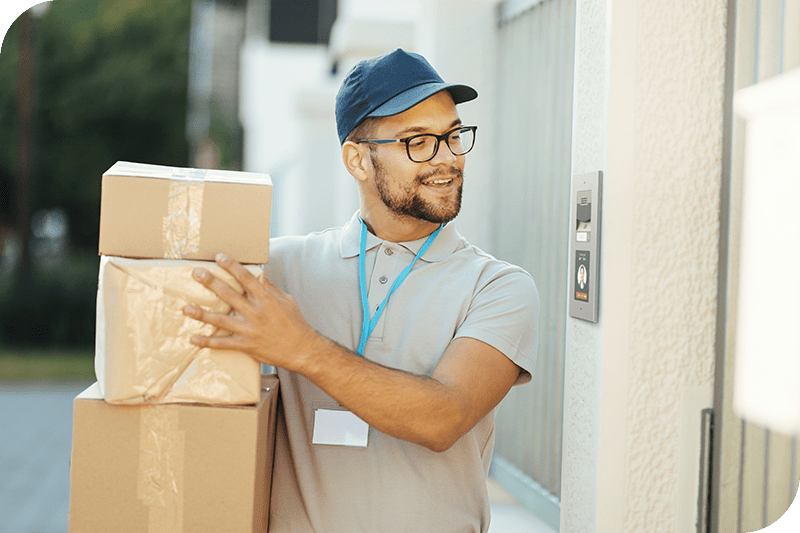Why are more and more homeowners integrating access control into their home automation systems?
 Lukáš Psota, 02. 02. 2022 | 8 min read
Lukáš Psota, 02. 02. 2022 | 8 min read
How big is the home automation market worldwide? It’s a tough question to answer but analysts tend to estimate it at between $50 billion and $70 billion. What no one doubts is that the market is booming – with double-digit growth expected annually over the coming decade.

The main factor driving this growth is intuitive: the pandemic has led to most of us spending more time at home and that incentivises us to upgrade every aspect of our home environment. Put simply, more time at home means more focus on the home.
In addition regulating everything from the lights, air-conditioning and music system, more and more people are starting to integrate access control technologies into their home automation systems.
Why?
The answer to that question is, I think, in three parts:
1. Technological progress – access control can now be integrated into home automation systems in ways that makes home life more comfortable and convenient and secure.
Smart intercoms can, of course, do far more than open doors. Their easy integration is the key, because consumers – quite rightly – have no patience for smart home devices that don’t work well together. That’s a major problem for products which are run on proprietary, closed systems which can’t be interconnected with different brands. It means that the buyer has to seek out a home automation vendor that specialises in custom solutions and, probably, means buying a whole range of appliances that the vendor is endorsing – which increases the costs.
Instead, the future of home automation will be driven by devices which are based on open standards or can easily adapt to vendor-specific protocols and can be integrated with third-party technology to create one complex smart home ecosystem.
It will also be driven by meeting consumer demand for the flexibility to add amazing new features to their smart home as soon as they want them. Remote management options like the My2N cloud platform can make a real difference here, enabling integrators to serve their customers more effectively and saving them both time and money in the process.
2. Some of our attitudes have not been changed by the pandemic
I am thinking about security in particular: it has always been a priority to feel secure in our own homes. Spending more time at home hasn’t changed that in any way, which is why more and more homeowners are connecting security enhancements into their smart home systems.
To give you just a couple of examples of upgrades that can address different scenarios:
A visitor rings from the front door of your block of apartments when you’re not at home. Maybe it’s a burglar checking whether anybody is at home? 
If you have an 2N IP intercom, you can receive the call on your smartphone. Because of its built-in camera, you can see the man and talk to him – and, if you want to, pretend that you are at home. Connecting the intercom to a home automation system means you can go one step further by taking action in real-time – for example, by turning on the lights in your house remotely. In most cases, this will be enough to dissuade him.
There has been a spate of burglaries in your area and you are worried about people prowling around outside your house
In this case, you can activate motion detectors which turn your house lights on automatically when they are triggered. The same can be done with the camera in 2N IP intercom. Furthermore, the intercom can also play a pre-record message and take a sequence of snapshots which are sent straight to your inbox.
For many homeowners looking to take their security system to the next level, integrating access control and home automation can give them exactly what they are looking for.
3. Some of our behaviours have been changed by the pandemic
I specifically mean the rapid acceleration in the growth of e-commerce. Based on some recent forecasts, e-commerce may have its first trillion-dollar year in 2022, primarily driven by sales through smartphones.
E–commerce has led to a “delivery economy”, which is encouraging homeowners to incorporate package delivery into their home automation systems. By connecting 2N IP intercoms, it is possible to pre-programme the system for different types of scenario. For example: 
You are expecting a package but you need to go out
Using remote door control, you can open the gate to the courier via the app – of course you can talk to them and see them from the intercom’s camera. You can then switch in the app to the stream from an external IP camera to be sure that courier puts the package to the right place.
You want the courier to leave the package in the garage – where it will be safe and out of the rain
Not only can you programme the system to open the garage door, you can do so only partially – maybe 20 percent: enough to slide the package through without the courier needing to enter the garage themselves. If you’re still nervous about it, you can set a security camera to be recording this area. Once the courier has dropped off the package, the system can automatically re-lock the garage door.
So the answer to the question that opened this piece – why are more and more homeowners integrating smart door communication and access control into their home automation systems? – is a relatively simple one, and it’s the same answer that lies behind nearly every historical trend in access control:
Because technology keeps improving, which is constantly opening up new possibilities. Because it can give us greater peace of mind. And because it can make our lives easier and safer.